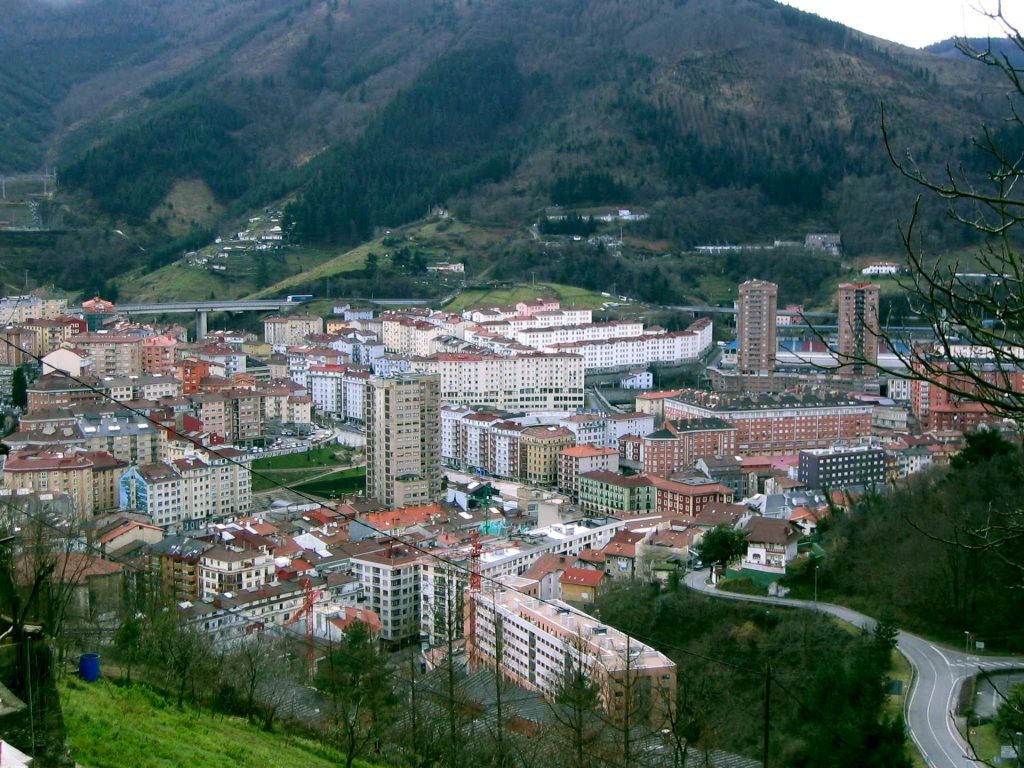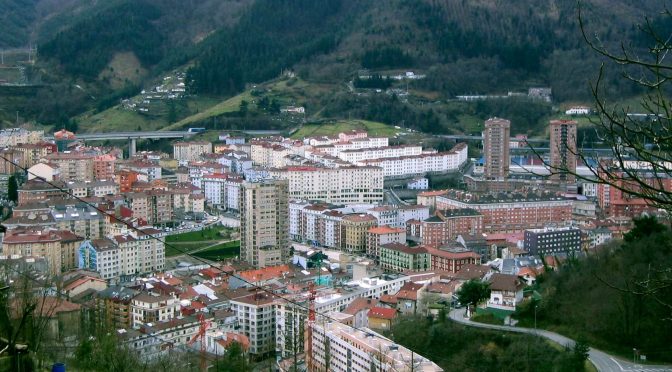When I lived in the Basque Country, feebly trying to learn Euskara, I spent a lot of time in Ermua, Bizkaia, where my aunt and her family lives. Just across the border, in Gipuzkoa, lies Eibar. As a relatively young kid, I never gave Eibar much thought — it was just a town that the train went through on the way to Ermua. Once or twice, what I might call my cuadrilla took me to Eibar and we wandered the streets, hopping from bar to bar, but that was about all I knew. However, with age comes some “wisdom,” and learning about these places I only passed through back then always offers new surprises. Eibar has a fascinating history that dates back nearly one thousand years.

- Eibar was founded in 1346 through a charter granted by King Alfonso XI. The original town, which was encircled by a wall and towers, centered around the parish of San Andrés. However, the first mention of the name dates to the 12th century, regarding the marriage of the daughter of one Unzueta de Eibar. The groom-to-be made an offering of twenty-four pregnant cows to the Church of Cenarruza to praise and honor his bride.
- During its history, Eibar has been destroyed at least twice, once by French armies in 1794 and a second time during the Spanish Civil War. This act followed in a long tradition of the town supporting liberal causes and being a bastion for social and labor movements. For example, in 1931, Eibar was the first city in Spain to proclaim the Second Spanish Republic, for which it received the title of Very Exemplary City.
- Eibar is a sanctuary of the Basque language, still used every day by much of the populace. Being on the border with Bizkaia, their Basque has been related to those dialects, though there are certainly influences from Gipuzkoa and some loan words from Spanish. Historical documents from Eibar reveal a number of Basque words that are today anachronistic, but highlight the richness of the local dialect: words such as idacorri, to read; yrago, to pass; ustarrila, January; osteruncian osteantzian, otherwise; auttuba, arbitrate or appoint. Further, because of the importance of the local iron and steel industry, whole vocabularies devoted to these fields arose in Eibar.
- Many of the inhabitants have worked in the local knife and gun factories. In fact, by the end of the 15th century, knives and guns from Eibar were well known throughout Europe. In 1538, Juan Orbea and Juan Ermua, residents of Eibar, were commissioned to manufacture 1,500 arquebuses and in 1570 armorers were taken from Eibar to Flanders to found the Belgian armory industry. In the 1800s, new factories to make six-shot cylindrical revolvers and arquebuses were established. In 1889, the town manufactured more than half a million weapons. In the early 1900s, some of these factories shifted directions, making for example bicycles, with Orbea being a prime example. However, there are still some 60 companies dedicated to various aspects of weapon manufacture in Eibar today.
- Notable Eibartarrak include 18th century writer Juan Antonio de Moguel y Urquiza, whose masterpiece Peru Abarka describes the way of life of the people of his time; Francisco de Ibarra, who founded the Mexican city of Durango; cinematographer Javier Aguirresarobe Zubía; and mathematician Enrique Zuazua.
- Of course, many might know Eibar because of the success of their soccer team. In 2014, SD Eibar was promoted to the La Liga, an impressive feat given the small size of the town — only about 30,000 people. They lasted in the premier division for seven years. This is one of the coolest aspects of the European system, where even small clubs have a chance to play in the big leagues.
Primary sources: Auñamendi Entziklopedia. Eibar. Enciclopedia Auñamendi. Available at: https://aunamendi.eusko-ikaskuntza.eus/es/eibar/ar-37475/; Eibar, Wikipedia
Discover more from Buber's Basque Page
Subscribe to get the latest posts sent to your email.



4 thoughts on “Basque Fact of the Week: The Basque City of Eibar”